[Last updated March 2023] A guide to serviced offices and office space for rent in Dublin as well as general information that may be useful if you are thinking of renting office space in the city.
For further office information or to search office space for rent in Dublin just click. Or contact us for any other query.
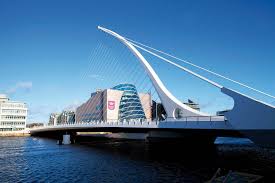
Dublin is the capital and most populous city of the Republic of Ireland. It is located on the country’s east coast and has been the site of much of its economic, social and historical developments over the course of the past 1,000 years or so.
A huge amount of social, economic and cultural upheavals have taken place in the city over the course of the last several centuries and not least since the end of the Second World War.
Periods of economic stagnation, decline and ultimately rejuvenation have all had a major impact on how the city looks and the way that Dubliners see themselves.
County Dublin
The city itself lies in the heart of what is referred to as County Dublin, which is one of 26 counties in the Republic of Ireland and covers an area of almost 1,000 sq km in the Province of Leinster. The most recent census indicated that there are around 1.18 million people living in the region, with the vast majority living in and around the major urban centre which is close to the mouth of the River Liffey.
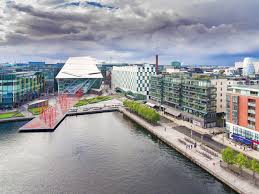
Having first been founded by Vikings in the first millennium, Dublin was subject to numerous invasions, conflicts and colonisations during the first thousand years of its history. Eventually, the British Empire came to dominate administrative matters in the Irish capital and precipitate the most lasting changes to the city and its surroundings.
Georgian Period
As far as Dublin is concerned, the so-called Georgian period of history, between 1714 and 1830, was one of large-scale rebuilding and development work being carried out under British rule. Despite having been one of the most populous cities in Europe in around 1700, Dublin remained an essentially medieval city and a great deal of work was required to turn it into something more like the city we know today.
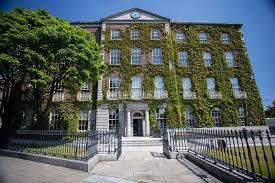
For better or worse, the Georgian period gave Dublin what were to be its defining architectural features for the better part of two centuries. The housing projects established on both the north and south sides of the city were the result of a house-building boom in the 1800s and many of these properties were to remain intact until very recently.
This link to an architectural and cultural past in greatly valued in some respects, but by the 1990s, the 200-year-old housing stock was in a state of obvious disrepair. So much so that some areas could convincingly be used as backdrops for movies set in post-war Germany.
Rejuvenation and the ‘Celtic Tiger’ period
Ireland has never been an industrial powerhouse and was for decades regarded by many as something of a European backwater. But this has all changed in recent years because a period of unprecedented economic dynamism has led to the country being dubbed the ‘Celtic Tiger’.
![]()
In fact, for around a decade after 1997, Dublin and Ireland as a whole were able to boast economic growth rates that were the envy of much of Europe and the developed world. Indeed, for a number of years, the country’s economy grew dramatically, with annual growth rates consistently getting close to or topping double figures.
After the Downturn
As was the case for much of the world, the Irish economy took a notable turn for the worse in the few years after 2007, but the prior decade saw a number of significant positive developments for Ireland and Dublin in particular that have stood the economy in good stead.
Many of the world’s biggest and best-known companies now have permanent offices and business centres in Dublin, and major players in the information and communications technology industries have established their European headquarters in the area in recent years.
Household names like Microsoft, PayPal, Facebook, LinkedIn and Google, all have offices in their name or are renting office space in Dublin, while Intel and Hewlett-Packard both have significant manufacturing centres nearby.
Dublin’s Office Space Market
Dublin’s strategic geographical position, low corporation tax rates and business support infrastructure have made the city a popular location for international companies looking to establish their European or EMEA headquarters.
Long-established household names such as Coca-Cola and Vodafone and large professional services companies such as Accenture, Deloitte and KPMG discovered the strategic benefits of Dublin as an office space location many years ago.
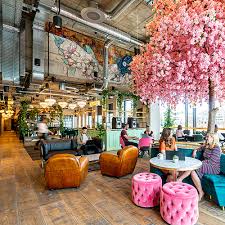
In more recent years, the city has seen giants of the tech world including Amazon and LinkedIn also taking office space in the city.
Many of these new wave office occupiers have taken space in the Dublin Docklands, specifically around the Grand Canal Dock leading to the district being renamed as Silicon Docks.
In January 2019, Airbnb Inc. rented 40,000 square feet of office space in Dublin’s Grand Canal Dock area, relocating their employees from the Watermarque building to the Reflector building.
The Reflector building in the Tech District is already home to firms including Facebook, Google and Wix.
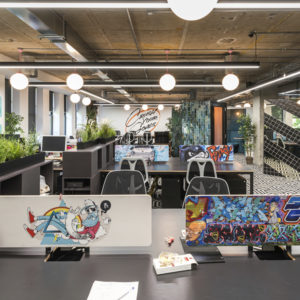
The D2 postcode area south of the river, as well as D1 north of the Liffey, still remain vibrant and popular business districts, as does Ballsbridge D4.
In fact, some of the tech giants, including LinkedIn and Amazon, have chosen to be based in these traditional business districts of the city centre.
And 2018 saw the 870,000 square foot mega letting by Facebook in Ballsbridge.
In 2019, Paddy Power signed for just under 50,000 square feet at the Belfield Office Campus in Dublin 4.
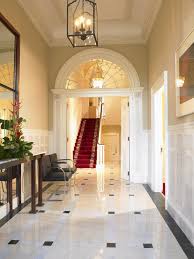
Other popular office space locations include the Swords area close to Dublin Airport, and out-of-town business parks such as Blanchardstown Business Park and Sandyford.
The largest deal of 2019 was the pre-letting of 430,000 square feet to Salesforce at Spencer Place.
Salesforce already occupied approximately 150,000 square feet between Central Park and Sandyford Business Park so this deal represents a trebling of their office space footprint in Dublin.
Other large deals of 2019 include Facebook taking 175,000 square feet at Nova Atria South and Docusign taking 99,000 square feet at 5 Hanover Quay.
Other locations that are popular, particularly with individuals and companies wishing to occupy office space outside of the city centre, include Foxrock, Tallaght and Blackrock.
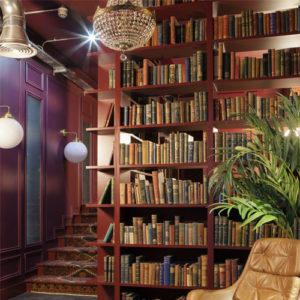
In 2019, Zurich Insurance Group Ltd took 18,500 square feet of office space at Trident House in Blackrock.
Whilst Dublin’s favourable business environment has, for a long time already, been a pull for international business, it should not be discounted that recent deals and future deals may be Brexit-motivated.
It is important for many businesses, for many reasons, to have a presence in an EU country and there has already been an increase in the number of companies taking virtual offices in Dublin for face-value purposes.
An average of 310,000 sq ft of take-up took place each quarter since Q1 2020, compared to a quarterly average of 820,000 sq ft in the preceding five years.
A total of 1.5 million square feet of leasehold office deals were transacted in 2021.
In 2022 take-up was slightly below the 10-year annual average but represented a 60% increase on the previous year.
in 2023, it is predicted that prime rents will reach pre-pandemic levels of €62.50 per square foot in Dublin’s CBD with rental levels in the suburbs reaching €28 per square foot.
Flexible workspace market in Dublin
Coworking and flex space providers have contributed significantly to Dublin’s office space takeup in recent years and, in 2019, WeWork took 18,000 square feet at George’s Quay House representing their seventh deal in the city since entering the market in Q4 of 2017.
And Pembroke Hall took just under 16,000 square feet of office space at Ballast House on the junction of Aston Quay and Westmoreland Street.
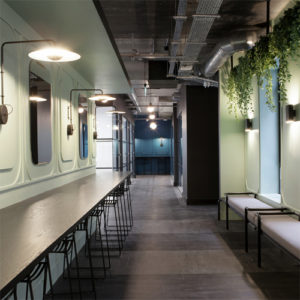
Office providers carve up the office space to provide private office suites, coworking spaces that incorporate hot desking (or floating desks) and dedicated desks in shared office space settings, and managed office space solutions.
These flexible workspace solutions provide space on flexible licence agreements rather than leases. The offices are serviced meaning that the monthly payment covers occupancy costs such as City Rates, utilities, insurance, service charge, cleaning, furnishing and so forth.
Broadband and telecoms are pre-installed and many flexible workspace centres provide showers, bicycle storage, coffee on tap, printing and copying facilities and more, many also have community managers organising a calendar of social and business networking events.
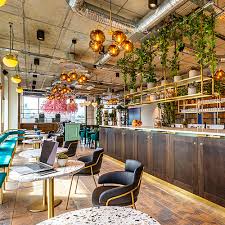
The flexible workspace market has grown significantly in the last decade, and with economic uncertainty surrounding Brexit and other international events, the demand for flexibility and agility for companies is expected to increase.
Businesses of all sizes from all sectors are increasingly demanding short-term, fluid real estate agreements which allow them to upscale, contract or relocate rapidly.
They want to take occupation quickly and have facilities automatically provided for them on arrival.
Once a solution for start-ups or SMEs seeking office space, large multinationals such as Facebook and Microsoft are now opting for flexible workspace solutions in Dublin to complement their traditional leasehold office portfolios.
Companies of all sizes are now realising the financial and strategic benefits of serviced offices and coworking spaces.
Many of the larger office space providers are now offering custom-built HQ options for larger teams and companies wishing to utilise flexible workspace solutions.
These providers offer whole floors, multiple floors and even whole buildings that will be fit-out to an occupier’s bespoke requirements and then be managed by the provider.
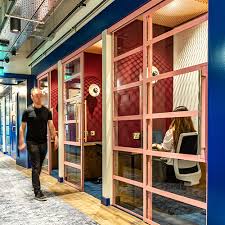
These managed offices are becoming an increasingly popular corporate office space solution in Dublin.
International office and coworking space providers such as WeWork and Regus have a large presence in Dublin, as well as Irish providers Glandore, Pembroke Hall, Iconic, and OfficePods; these 6 office providers control just under 60% of the Dublin flexible office space market.
In terms of pricing, with all flexible workspaces, pricing of serviced office desks is dependent on several factors including the total amount of desk space required, the length of commitment, current availability, bespoke service agreement and so forth.
Generally, the average price of a desk in a flexible workspace building remains at €500 per desk per month.
Cheaper and more affordable serviced offices in Dublin can be found at around €300 per desk per month.
High-end luxury serviced offices in more modern spaces can cost from €650 per desk per month.
In 2023, there are 38 flex space providers in Dublin offering an increasingly diverse range of workspace options from a variety of building types across the city. Profiles of each of these can be found in this directory.
Please get in touch to discuss your flexible workspace requirement and we will be happy to assist.
Whether you are searching for temporary start-up office space, a one-person private office, a two-person private office, a large serviced office space, a hot desk, a large co-working space, managed offices or corporate office solutions then we can help.
We scan the whole Dublin office space and flexible workspace market for you and produce a report that matches your bespoke requirements, in minutes.
Transport
Dublin Airport is located around 6 miles north of the city in what was until recently an entirely rural area. The airport carried more than 31 million passengers over the course of 2018, with the bulk of flights being made to other UK or European destinations. Resident carriers Aer Lingus and others run long-haul flights from Dublin but most of the traffic heads to and from the UK, with 50 daily departures to one of London’s five major airports.
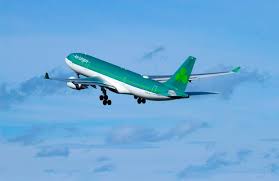
As the country’s capital, Dublin is naturally at the centre of Ireland’s national transport system, with links to all other parts of the island stretching out from the east coast destination. The city is served directly by the M50 motorway, a light rail, national rail and a commuter rail system, as well as an extensive bus service covering the entire wider Dublin area.
In late 2005, a major investment and development project dubbed ‘Transport 21’ was launched and a total of around €34 billion was pledged to help “transform the city and radically improve it for us all – citizens and visitors alike”. A huge variety of projects, large and small, have since been undertaken under the Transport 21 banner.
Among Dublin’s most eye-catching transport developments of recent years has been the Samuel Beckett Bridge, which crosses the River Liffey from Guild Street to the North Wall Quay area of the Docklands.
Culture
As the Beckett Bridge demonstrates, Dublin has a strong affinity for its cultural heritage and particularly for its long list of influential writers. Samuel Beckett is one of three Nobel prizes for literature laureates to hail from the Irish capital (the others being W.B. Yeates and George Bernard Shaw). And, not to be outdone, Beckett’s fellow titan of 20th-century literature James Joyce has a Liffey-crossing bridge named after him.

With the help of a host of other famous Dublin writers including Oscar Wilde, Jonathan Swift and Bram Stoker, the city has more than earned its place as one of the world’s primary centres of artistic creation – a fact recognised recently by the United Nations as Dublin became a permanent ‘Unesco City of Literature’.
Tourism and sport
Dublin is among the most popular tourist destinations in western Europe, boasting international sporting arenas like Croke Park, unforgettable landmarks like Dublin Castle and the relatively recently-built Spire of Dublin. Elsewhere there are parks and zoos and festivals and street performers and some of the most popular venues for stag and hen parties anywhere in the world.
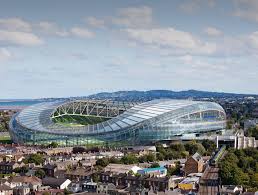
Shopping has increasingly become a national pastime and the capital leads the way with several of the most visited retail districts in the country, including Grafton Street and the Jervis Shopping Centre.
Sport is enjoyed by millions of people across Ireland every week and Dublin is one of the best places to get a taste of the unique atmosphere generated by a high-level Gaelic football match. Thousands turn out weekly to watch the top teams in what is Ireland’s most popular sport. Meanwhile, hurling, rugby union, show-jumping, golf, boxing, MMA and association football are also hugely popular national pastimes.

Your Dublin office space requirement
Our office space search, advisory and acquisition services are FREE, always. Our Dublin office space brokers and agents are globally regulated by the Royal Institution of Chartered Surveyors (RICS) ensuring the highest standards of commercial property advice and service at all times.
